
Executive Summary: Layer-2 blockchains were developed to help overcome the weaknesses in scalability seen in Layer-1 blockchains such as Ethereum. Their success has played a vital role in the growth of DeFi, NFTs, and other Web3 solutions on Ethereum. But after the successful completion of its ongoing PoS upgrade, the Ethereum Layer-1 blockchain is expected to become faster and more scalable than ever. What role, if any, will Layer-2 protocols have in the future of Ethereum 2.0? Are they still worth your investment? Find answers to these questions and more as we take a deep dive into the top Layer-2 blockchains.
Industry Overview
Blockchain developers have to balance three major needs when designing a protocol – security, decentralization, and scalability. In traditional layer-1 protocols like Ethereum and bitcoin, improved security and decentralization often comes at the cost of scalability. This is commonly referred to as the “Blockchain Trilemma.”
Ethereum was the first major blockchain to provide smart contract capabilities. This first-mover advantage allowed it to attract developers and users at a rate that other newer Layer-1 blockchains find almost impossible to emulate.
But as the number of transactions on the blockchain increased dramatically, the network started experiencing crippling delays. And since the protocol has a bidding system for available block space, this led to astronomically high transaction costs (gas fees).
In some instances, the gas fees shot up to 500m gwei or around $1600 in current prices. And in those times of peak congestion, a single transaction could take more than 24 hours. For reference, a normal transaction during low traffic only takes a few seconds or minutes.
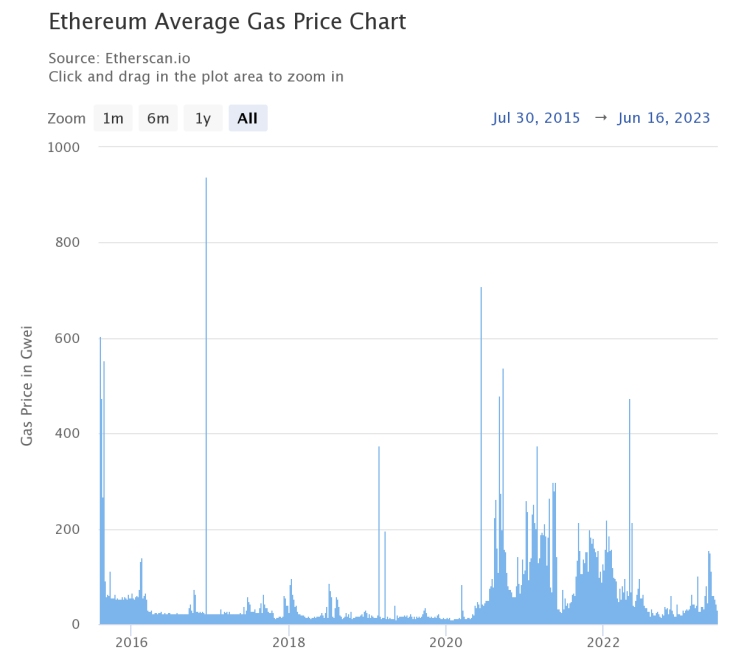
The main reason for this congestion is the extremely low rate of transactions per second (TPS) the original Ethereum blockchain could handle – between 12 to 15 transactions. The number for bitcoin is even lower – just 5 TPS.
These older Layer-1 blockchains use a Proof of Work (PoW) consensus mechanism. The system, while excellent at providing security, is severely lacking when it comes to efficiency and scalability.
As network congestion became a major headache on Ethereum post-2020, Layer-2 blockchains were created to improve transaction speeds and reduce gas fees.
A Layer-2 blockchain is a separate network that is built on top of an existing Layer-1 blockchain. Its main purpose is to remove or reduce the common transaction bottlenecks that prevent a blockchain from growing to accommodate more users and decentralized apps.
During heavy network activity, Layer-2 networks take the bulk of transactions away from the mainnet. After processing the transactions, the data is posted back onto the Layer-1 through a connecting bridge.
Different Approaches to Layer-2 Blockchains
Over the years, developers have created multiple approaches to implementing Layer-2 solutions. The most adopted Layer-2 solutions in the industry in terms of market cap and TVL use one of the following 3 approaches
Plasma
A Layer-2 protocol using the plasma framework creates multiple “child chains” connected to the Ethereum mainnet. While it boasts of a high TPS capability, plasma chains are not easy to design. They are more useful in specific use cases like decentralized exchanges, gaming, or token transfers. Polygon is a leading Layer-2 blockchain that deploys plasma chains.
Optimistic Rollups
A rollup is a Layer-2 solution designed to execute hundreds of Layer-1 transactions outside the mainnet. The solution then “rolls up” these transactions and compresses them into a single piece of data before posting them back on the mainnet.
Optimistic rollups are a subcategory of rollups that operate under the assumption that all transaction data committed to the mainnet is correct by default. But users can still challenge it on-chain and trigger a dispute resolution process.
By quickly processing transactions in good faith off-chain, optimistic rollups dramatically increase transaction speeds. But there is a slight delay in confirmation of transactions on the Ethereum mainnet, due to the provision for dispute resolution.
Optimistic rollups are best suited for situations that involve many low-cost transactions. Perhaps not surprisingly, two of the most popular Layer-2 protocols by network activity – Arbitrum and Optimism, use Optimistic rollups.
Zero-Knowledge Rollups (zk-rollups)
Instead of relying on an on-chain dispute resolution model, zk-rollups use cryptography to validate and authenticate transactions. Apart from that, everything else is broadly identical to how optimistic rollups work.
Zk-rollups are generally considered to be more efficient in situations that involve complex computations or enhanced security considerations. But they lack the full Ethereum Virtual Machine (EVM) compatibility that you get from optimistic rollups. This hinders interoperability, which is becoming increasingly important in the blockchain ecosystem. Additionally, zero-knowledge rollups and proof systems are complicated to build and deploy, which has limited their usage in real-world cases.
Layer-2 Industry Growth
Layer-2 blockchains played a major role in the rapid evolution and explosion of the DeFi ecosystem between 2020 and 2022. As Ethereum embarked on a multi-year transition into Proof of Stake (PoS), Layer-2 protocols enabled users to avoid high gas fees and network congestion.
Due to its widespread adoption and features, Ethereum remains the industry leader in DeFi growth. According to DeFiLlama, the blockchain accounts for 58.58% of the total value locked into the ecosystem – valued at nearly $25 billion in Q2 2023.


During its peak in Q4 2021, the total DeFi ecosystem was worth north of $174 billion, with close to $110 billion residing on the Ethereum network. This kind of growth would have been impossible without the support of Layer-2 blockchains.
Investment Thesis
Layer-2 blockchains primarily revolve around Ethereum, the largest and most popular Layer-1 blockchain that supports smart contracts and DeFi apps. That begs the question “Why not just invest in Ethereum?”
While Ethereum is big on security and decentralization, it has a critical weakness in its lack of scalability. Without the ability to scale with demand, the growth and further evolution of Etheruem seems impossible. This is why we’ve seen the growth in the number of L2 solutions looking to tackle Ethereum’s scalability issues.
This faith has been validated to some extent by the rapid growth we witnessed in the DeFi space after 2020. According to Nansen, the TVL in DeFi grew more than 6,900% between 2020 and 2022. Even after a 76% market correction in 2022, the space still retains billions of dollars in locked capital.
Outside of the cryptocurrency space, blockchain technology has applications in traditional finance and banking. And here, just as much as in crypto, scalability is crucial. Even if the wider crypto-markets fail in the long term, Layer-2 blockchains will still have a major role to play in the future of traditional finance, making them attractive targets for investors looking to capitalize on this growing need.
While there are many compelling reasons to invest in Layer-2 projects, significant risks also exist. Chief among them is the possibility that Ethereum fails to succeed long-term. Because the L2s depend on Ethereum that would be a blow to the sector that it might not be able to accept.
Ultimately, if you are going to invest in one of these Layer-2 projects, it is important to choose the best. That’s the one with the most growth, the most user traction, and the one most likely to succeed. Because if L2s remain necessary it is likely that eventually it will be a winner-takes-all scenario.
Who’s Investing: Institutional Backing
All the major layer-2 blockchain projects have received hundreds of millions of dollars in funding from well-known investors in the crypto space.
Polygon’s backers include Sequoia Capital, SoftBank, Galaxy Digital, Tiger Global Management, Alan Howard, Kevin O’Leary, and Makers Fund, to name a few. Together, these entities have poured over $450 million into the project across 8 funding rounds.
Arbitrum counts Mark Cuban, Polychain Capital, Ribbit Capital, Redpoint, Pantera Capital, Coinbase Ventures, and Compound VC among its main investors. Total capital inflows into the project exceed $143 million.
In its Series A funding round, Optimism raised around $25 million from Andreessen Horowitz (a16z), Paradigm, and IDEO Colab Ventures. Paradigm and a16z doubled down on their investments in the Series B round, pooling another $150 million into Optimism in 2022.
Immutable raised around $75 million through its Series A and B funding rounds. Major investors included Apex Capital, AirTree Ventures, Alameda Research, and Galaxy Interactive. In another massive funding round in 2022, the firm received $200 million from Temasek, Tencent, ParaFi Capital, and nine other investors.
Top Layer-2 Projects
| Project | Market Cap | Protocols | Revenue (Annualized) | TVL | Avg Daily Active Users |
| Polygon | $5.73b | 427 | $25m | $890.31m | 389.17k |
| Arbitrum | $1.27b | 361 | $13.24m | $2.06b | 185.48k |
| Optimism | $741m | 144 | $16.09m | $779.44m | 77.17k |
| Immutable X | $660m | NA | NA | NA | NA |
 Polygon (MATIC)
Polygon (MATIC)
Market Cap: $5.73b
Number of Protocols: 427
Token Price: $0.62
Twitter Followers: 101.45k
Polygon is a Layer-2 ecosystem for Ethereum that was launched in Mumbai, India as the Matic Network in 2017. Originally, the project was a plasma sidechain network. By 2021, it had expanded to include zk-rollups and optimistic rollups and was rebranded as Polygon.
Polygon in its present state includes an eponymous software development kit – the Polygon SDK. Developers can use it to build any kind of Ethereum-compatible sidechain and decentralized applications.
The main Layer-2 blockchain at the core of the Polygon network is a PoS sidechain. The native token is called MATIC. The Polygon network has a TPS capacity of 65,000. And the gas fees are extremely low.
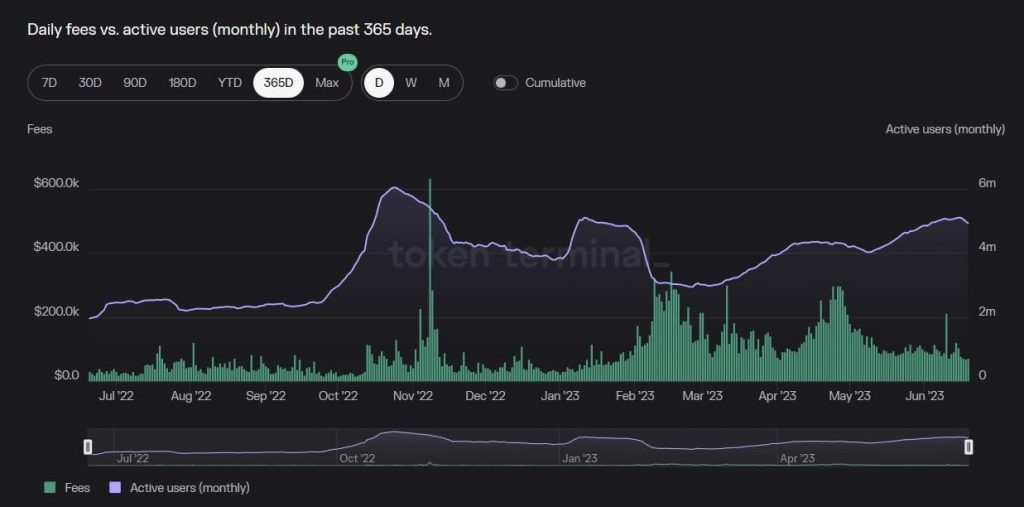
Developers have access to all major sidechain architecture options on Polygon – plasma, zk, and optimistic. Although it lags behind other Layer-2 protocols in terms of TVL, Polygon leads the sector in market capitalization at $5.7b.
A high market cap is a marker of wider recognition in the industry and greater support from investors. It shows that the project is in good financial health and has the resources to commit to further development and expansion.
Polygon is way ahead of every other Layer-2 project in this aspect. The nearest contender, Arbitrum, is only one-fifth its size at $1.2b. With a wider focus on diversity, flexibility, and class-leading TPS of 65,000, it still has a long way to go.
 Arbitrum (ARB)
Arbitrum (ARB)
Market Cap:$1.27b
Number of Protocols: 361
Token Price: $1
Twitter Followers: 805.5k
Arbitrum is a Layer-2 protocol for Ethereum launched in 2021 by a blockchain startup based in New York. The company, called Offchain Labs, was founded in 2018 and has major investors including Pantera Capital, Lightspeed Ventures, and the now-defunct Alameda Capital.
Unlike Polygon, Arbitrum is only focused on optimistic rollups. Transactions and smart contracts are settled on the Arbitrum sidechain and then reported back to the Ethereum mainnet. The Layer-2 protocol boasts a TPS of 40,000 and absurdly low gas fees.
Arbitrum is also fully compatible with all EVM programming languages. The blockchain has gained some traction in the DeFi space in recent years. Major DeFi protocols like SushiSwap and Curve have Arbitrum integrations.
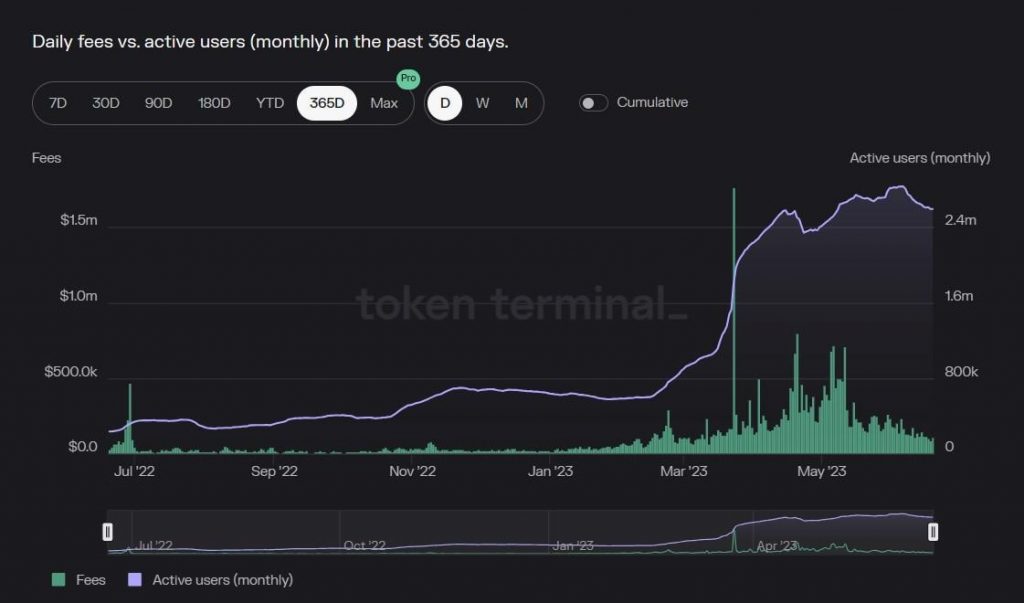
In 2023, the protocol also airdropped its highly anticipated native token called ARB. Arbitrum is generally considered a stable, mature, and reliable scaling solution for Ethereum. It also leads in terms of TVL among all Layer-2 rollups, with $2.06b or 67.12% of the market.
A higher TVL indicates that more users are actively participating in contracts and transactions using the Layer-2 blockchain. Especially in the early stages of a blockchain, this is a sign of high growth potential.
 Optimism (OP)
Optimism (OP)
Market Cap: $741m
Number of Protocols: 144
Token Price: $1.16
Twitter Followers: 516k
Optimism is another Layer-2 blockchain solution for Ethereum with its base in New York. The project was first unveiled in 2019 before its eventual launch in late 2021. As its name indicates, Optimism uses optimistic rollups, much like its rival Arbitrum.
The Layer-2 blockchain is based entirely on Ethereum and offers full EVM compatibility. All Ethereum-based decentralized apps can run seamlessly on Optimism as well. It has a maximum TPS of 2,000 which is on the lower end of the spectrum for Layer-2 transaction speeds.
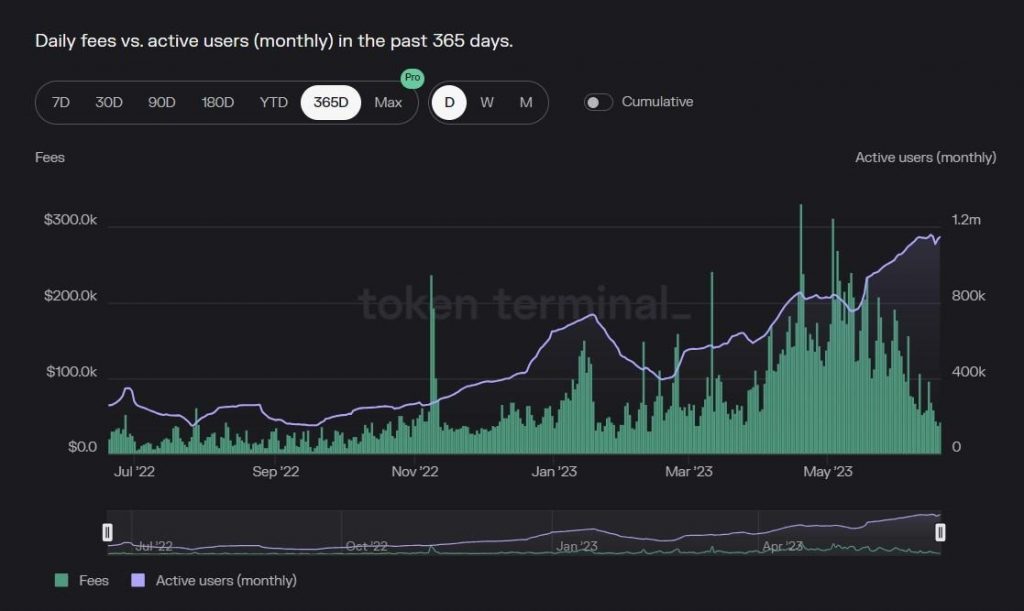
The native token on Optimism is called OP. It is based on the ERC-777 standard and functions as the governance token on the blockchain. It can also be bought and sold on all major crypto exchanges.
Although it has been around for several years now, Optimism has failed to gain the same level of traction as its direct rivals like Arbitrum. But it still accounts for about 25% of the TVL in rollup chains. Whether it will be able to sustain its market share and grow is still an open question.
 Immutable X (IMX)
Immutable X (IMX)
Market Cap: 660m
Number of Protocols: NA
Token Price: $0.63
Twitter Followers: 317.9k
Immutable X is a Layer-2 blockchain project with a dedicated focus on NFTs. It was launched in Australia in 2018. It is one of the first Layer-2 solutions to focus exclusively on NFTs and Web3 gaming. The startup was heavily backed by Coinbase and Alameda Research.
Unlike Optimism and Abritrum, Immutable X relies on the zk-rollup architecture for its Ethereum sidechains. The project uses a proprietary version of the zero-knowledge proof system called ZK-STARK for enhanced security.
Immutable X offers a maximum TPS of 9000, along with near-zero gas fees. The project also claims that all its transactions are 100% carbon neutral. The protocol supports all Ethereum desktop NFT wallets.
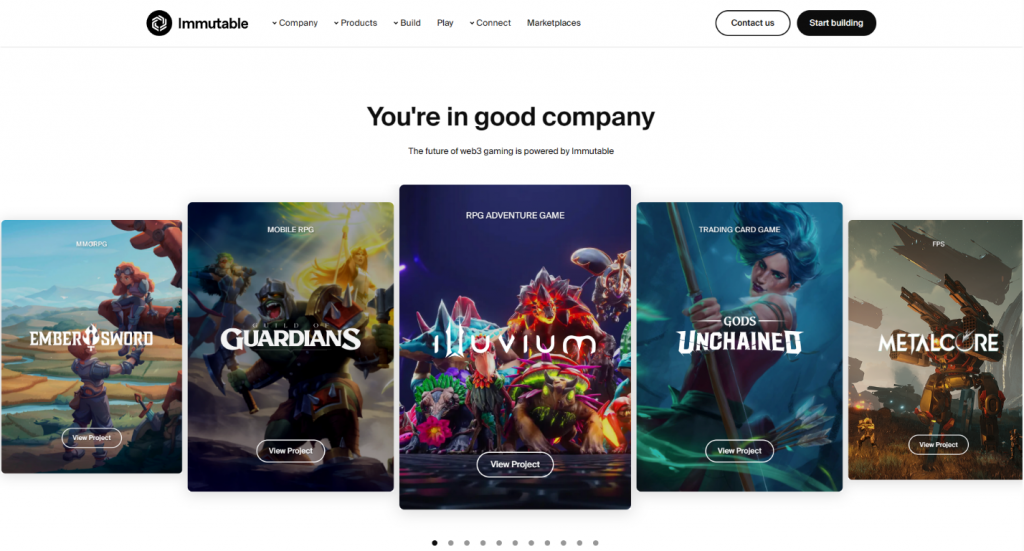
The native token on the protocol is called IMX. It is an ERC-20 token that can be used for paying gas fees and for staking. IMX also pulls double duty as the governance token for the Immutable X DAO.
With a market cap of $670m, Immutable X is certainly quite well known in the Ethereum NFT circles. But with the crypto market downturn, NFTs and the Web3 gaming model of play-to-earn may be on their way out. Immutable X probably has the weakest prospects of all Layer-2 blockchains featured on this list due to its narrow focus.
Investor Takeaway
Layer-2 blockchains provided the vital breathing space that Ethereum required during the bad old days of network congestion and high gas fees. After the complete transition to PoS, Ethereum 2.0 is expected to have transaction speeds of up to 100,000 TPS.
However, according to the roadmap shared by Vitalik Buterin, that milestone is still several years away. And existing Layer-2 blockchains will continue to play a significant role in the future, even after upgrades bring features like sharding to the mainnet.
Along with bitcoin, Ethereum is one of the most reliable blockchain investments in terms of longevity and mainstream acceptance. And popular Layer-2 protocols like Arbitrum and Polygon still have a future in the Ethereum ecosystem.
- SEO Powered Content & PR Distribution. Get Amplified Today.
- PlatoData.Network Vertical Generative Ai. Empower Yourself. Access Here.
- PlatoAiStream. Web3 Intelligence. Knowledge Amplified. Access Here.
- PlatoESG. Automotive / EVs, Carbon, CleanTech, Energy, Environment, Solar, Waste Management. Access Here.
- BlockOffsets. Modernizing Environmental Offset Ownership. Access Here.
- Source: https://www.bitcoinmarketjournal.com/sector-report-layer-2s/



